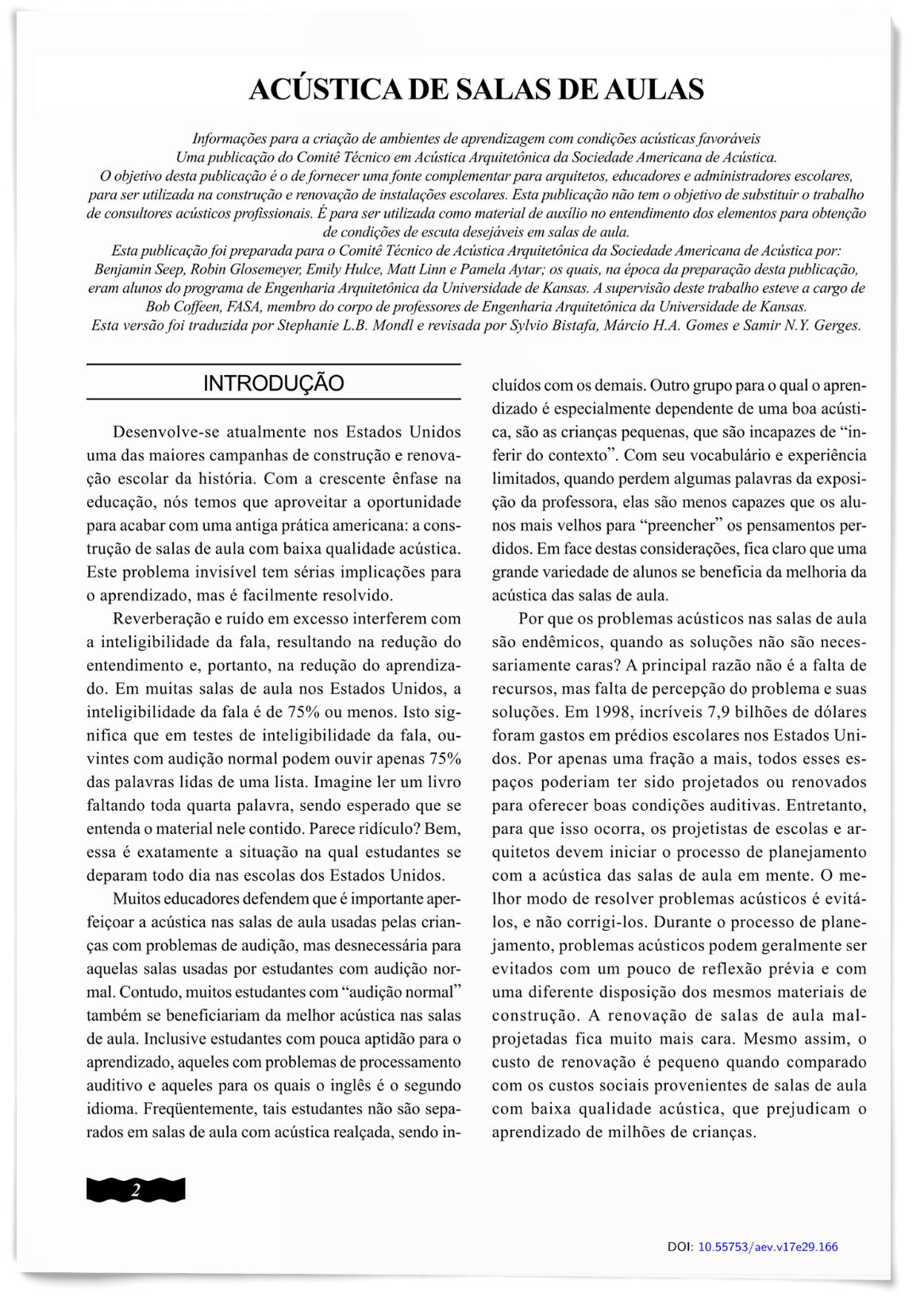Classroom acoustics
DOI:
https://doi.org/10.55753/aev.v17e29.166Keywords:
acoustic conditioning, teaching and learning, practical guideAbstract
Information for creating learning environments with favorable acoustic conditions. A publication of the Technical Committee on Architectural Acoustics of the American Acoustical Society. The purpose of this publication is to provide a complementary source for architects, educators and school administrators to use in the construction and renovation of school facilities. This publication is not intended to replace the work of professional acoustical consultants. It is intended to be used as an aid in understanding the elements for achieving desirable listening conditions in the classroom. This publication was prepared for the Architectural Acoustics Technical Committee of the American Acoustical Society by: Benjamin Seep, Robin Glosemeyer, Emily Hulce, Matt Linn and Pamela Aytar; who, at the time this publication was prepared, were students in the Architectural Engineering program at the University of Kansas. This work was supervised by Bob Coffeen, FASA, a member of the Architectural Engineering faculty at the University of Kansas. This version was translated by Stephanie L.B. Mondl and revised by Sylvio Bistafa, Márcio H.A. Gomes and Samir N.Y. Gerges.
References
M. Mehta, J. Johnsbn and J. Rocafort. Architectural Acoustics, Principies and Design. Prentice Hall, Columbus, Ohio, 1999.
W. J. Cavanaugh and J. A. Wilkes. Architectural Acoustics: Principles and Practice. John Wiley & Sons, New Vork, 1999.
C.M. Salter, Ed. Acoustics, Architecture, Engineering, the Environment. William Stout Publishers, San Francisco, 1998.
C. M. Harris. Noise Control in Buildings. lnstitute of Noise Control Engineering, Poughkeepsie, New York, 1997.
R. E. Apfel. Deaf Architects and Blind Acousticians? A Guide to the Principles of Sound Design. Apple Enterprises Press, New Haven, Connecticut, 1998. doi: 10.1121/1.423371
M. D. Egan. Architectural Acoustics. McGraw Hill, New Yerk, 1988.
L. K. lrvine and R. L. Richards. Acoustics and Noise Control Handbook for Architects and Builders. Krieger Publishing Co., Melbourne, Florida, 1998.

Published
How to Cite
Issue
Section
License

This work is licensed under a Creative Commons Attribution-NonCommercial-ShareAlike 4.0 International License.




